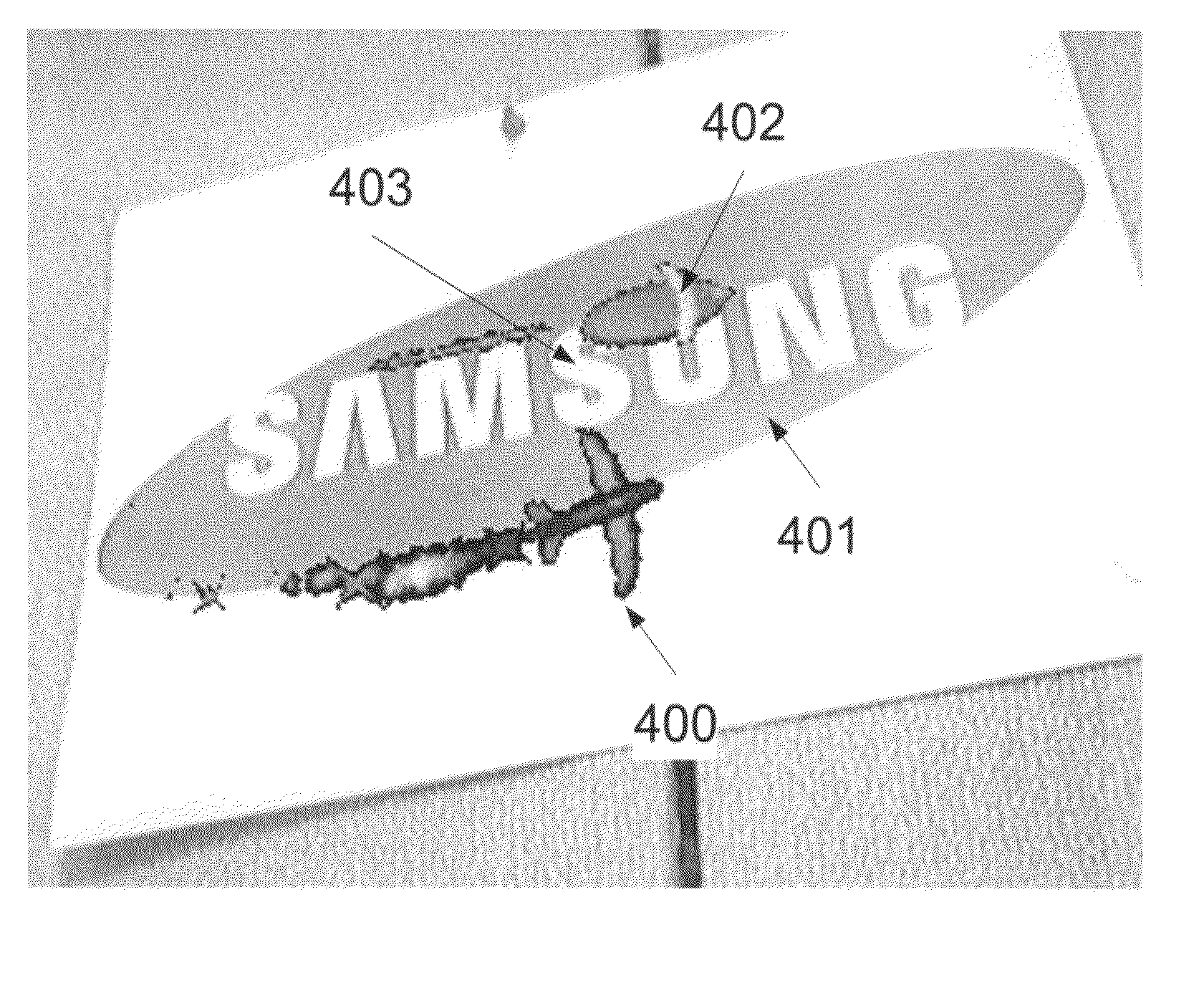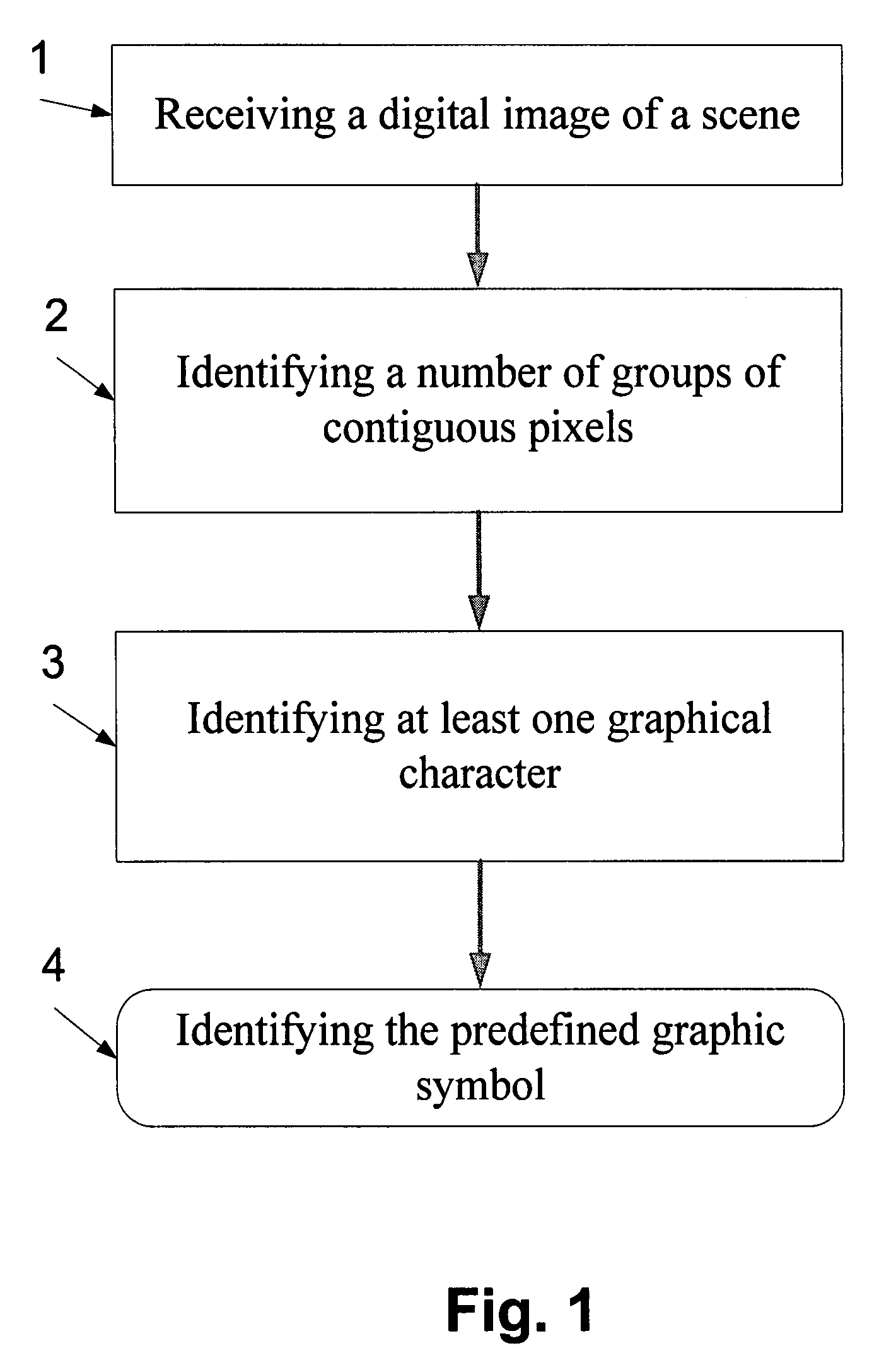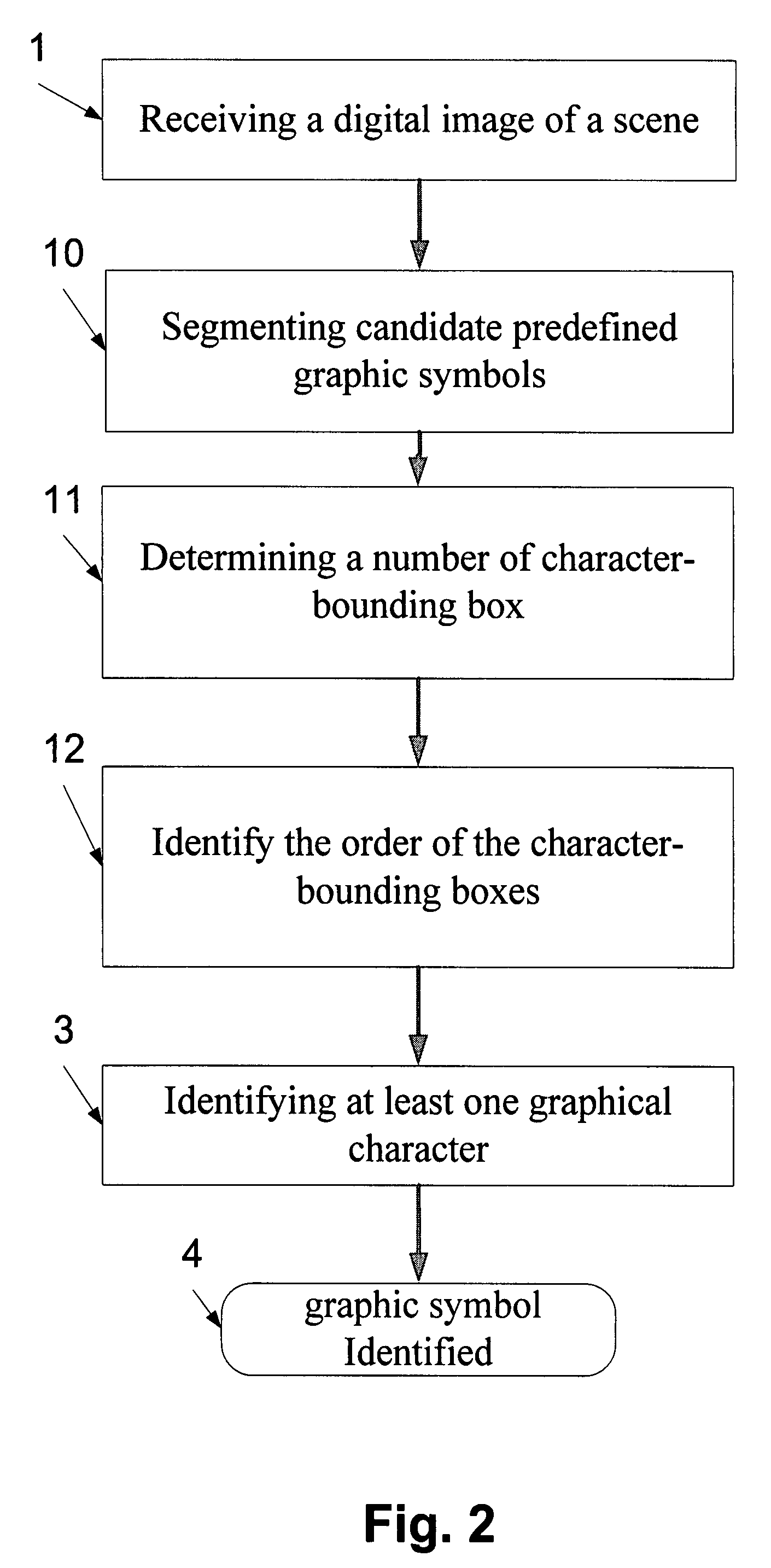Identification of a graphical symbol by identifying its constituent contiguous pixel groups as characters
a technology of identifying a graphical symbol and a character, applied in the field of system and a method for identifying graphic symbols in digital images, can solve the problems of not being able to recognize standard barcodes, computationally expensive, and inability to read and decode graphical characters of labels in digital images depicting scenes
- Summary
- Abstract
- Description
- Claims
- Application Information
AI Technical Summary
Benefits of technology
Problems solved by technology
Method used
Image
Examples
Embodiment Construction
[0055]The present embodiments comprise an apparatus and a method for identifying a predefined graphic symbol, such as a logo, having a number of graphical characters arranged in a digital image that depicts a scene. The method is based on a number of steps. Initially, the digital image is received and one or more candidate symbol segments that enclose candidate graphic symbols are identified. Then, a number of groups of contiguous pixels, which are arranged in the proximity of one another, are detected in each symbol segment. The members of each one of the groups have a common pixel defining property. Preferably, a number of character bounding-boxes, each designed to enclose one of the graphical characters, are defined, each character bounding-box enclosing a different group. In such a manner, all the potential characters are identified and the boundaries thereof are marked. Then, at least one of the enclosed groups of pixels is identified as one of the graphical characters of the p...
PUM
 Login to View More
Login to View More Abstract
Description
Claims
Application Information
 Login to View More
Login to View More - R&D
- Intellectual Property
- Life Sciences
- Materials
- Tech Scout
- Unparalleled Data Quality
- Higher Quality Content
- 60% Fewer Hallucinations
Browse by: Latest US Patents, China's latest patents, Technical Efficacy Thesaurus, Application Domain, Technology Topic, Popular Technical Reports.
© 2025 PatSnap. All rights reserved.Legal|Privacy policy|Modern Slavery Act Transparency Statement|Sitemap|About US| Contact US: help@patsnap.com



